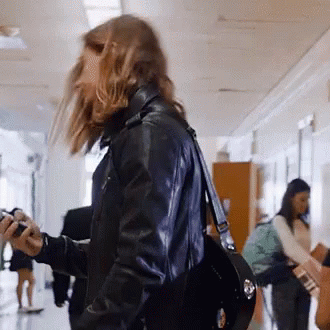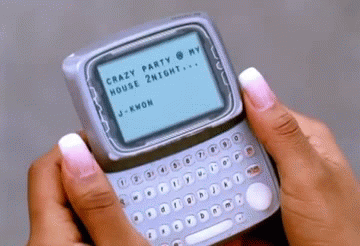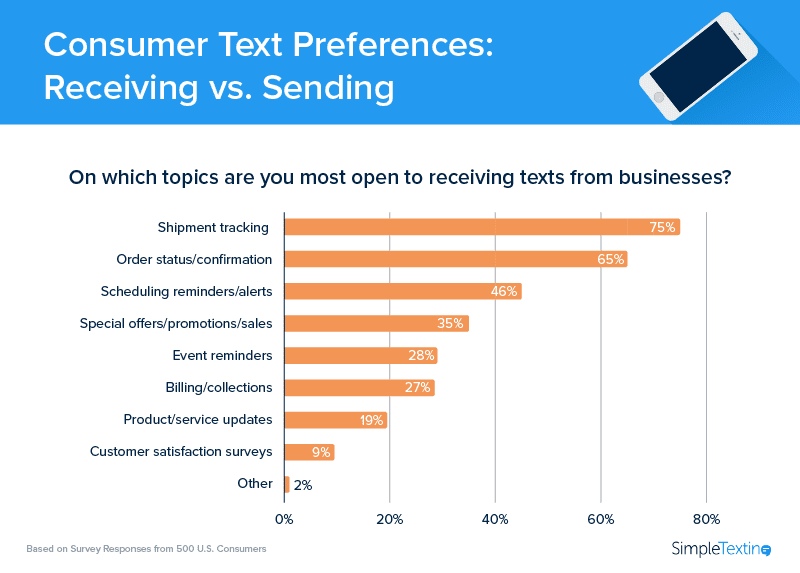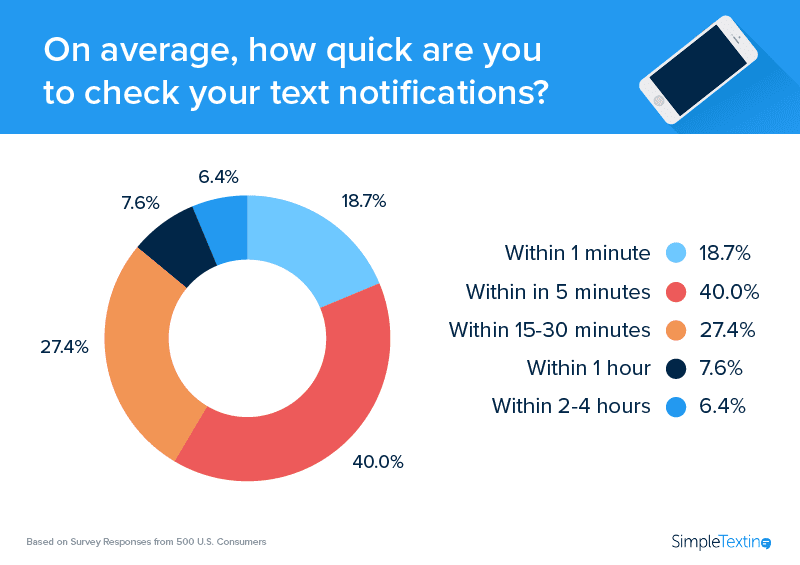Beep beep. You flip up your Motorola Razr, charms jingling. Clack clack clack. OMG WTF LOL etc. etc. Did you SEE what she was wearing? Butterfly clips? SOOO last season. Please, your mum says, not at the dinner table.

The 2000s were a wild time for text messaging. More like a wild wasteland, really. SMS is now considered an 'old' form of communication. How does that feel, that Gen Z is putting text messaging into the same category as faxes. Or smoke signals.
In fact, the first SMS was sent out in 1992, which actually makes this technology 29 years old. That's older than most of those celebrities you no longer recognise.
But SMS marketing is making a comeback. Its usage actually increased by 197% between 2015 and 2017 alone. This is particularly true in the B2B space, where clients would rather text with a business for scheduling or appointments, than by email or phone. Something which has become even more true during the pandemic.
So, this has led to SMS maintaining an average open and click-through rates of 98% for the first, and 19% for the latter. Who's opening texts anymore? I'm so young and hip, the only way you can reach me is in the Virtual McDonalds on a specific server in VR chat.
So, SMS has remained one of the most effective ways to grab your client's attention. If you're not creepy about it, that is. Sending a bunch of "U up?" messages to a customer at 3am is unadvised.
Receiving a text releases dopamine, the brain's pleasure and reward-seeking chemical. The dopamine system is most stimulated when the information sent is short, so that the brain isn't totally satisfied. So, a short text that's less than 160 characters, can really get those chemicals going.
SMS marketing can be used a few different ways, such as sending:
- Welcome messages for new customers
- Personalised offers
- Booking or purchase confirmations
- Up-sells
- Promotion notifications
- Coupons, Vouchers and offers
- Order, tracking, or delivery updates
So, with these examples, you can start to see what the goals of SMS messaging tends to be.
It's all about; building an audience that is engaged, and trusts the sender. Then, think about providing personalised marketing that appeals to this audience, using the right data from the start of the communication. And finally, automation. No self respecting marketer does all of their tasks themselves. Let the robots take the wheel. So, it's vital to have the most effective tools to automate essential and tedious marketing tasks, so you can get involved in the more exciting stuff.
Plus, 42% of Millennials check their text messages 10 or more times per day on average. So, that's a bunch of consistent eyeballs.
But let's have a look into how SMS can benefit marketers. Well first up, text messaging can:
Encourage faster engagement
It takes approximately 90 seconds for someone to answer an SMS message. Now compared to the 90 minutes it takes to answer an email, that's pretty impressive.
It even has proficiency in getting people to return to abandoned carts, or even providing quick-to-answer customer service inquiries. Basically, it's a two way communication system that is instantaneous, succinct, and impactful.
Provide a high level of personalisation
SMS allows consumers to respond straight away to a promotion, and keep the conversation going. This is particularly useful when promotions are time sensitive. By opening this conversation between the customer and the brand or company, engagement increases, and a stronger, more personal relationship can be built. And from this personal relationship comes trust.

With a personalised text message, consumers are much more likely to read the message, and appreciate it. Most of the time, customers have 'opted' into these messages, so they are more engaged from the start. So, you'll have access to a captive and loyal target audience.
Collaborate with new technologies
It's not all vintage tech round here. In fact, messenger apps, also known as OTT Messaging Apps, are one of the most popular smartphone apps. The top 10 have cumulatively more than 3 billion accounts.
The most popular, and biggest, app is WhatsApp, who has 700M users, with the number of WhatsApp messages sent daily exceeding the number of SMS messages. In fact, in one year alone it handled more than 7 Trillion messages.
So, these apps are creating a new landscape, and image, for text based communication.
Track easily
SMS is particularly easy to track. This is a huge benefit as you'll be able to gain a good level of transparency to see what is working, and what isn't. Then, it can be changed.
So, you can track what links are clicked the most, and what type of customer has clicked the link. This means you'll get your hands on some highly specific, and highly valuable, data about your target audience's interests, purchase history, etc. etc. On top of this, it can make a pretty good business case on how your campaign is doing.
Provide a good ROI
SMS is pretty damn cheap. Plus, you'll tend to see a healthy return on investment from this type of marketing. An average SMS message costs around $0.02. So, it's not exactly breaking the bank.
For example, if you send a campaign out to 100,000 clients, who are highly targeted and engaged individuals, it'll only cost you $2000. So, that's not that many conversions needed to break even, and start making money. In fact, a usual SMS campaign will convert between 5% and 30%, so you do the maths.
Be Eco-friendly
In comparison to a bunch of different techniques, SMS has the lowest impact on the environment, in terms of its carbon footprint. This includes email, direct mail and face-to-face meetings. There's no waste, no paper, no cars involved, just a quick text and an emoji or two. Or three.
Either way, if your company is trying to maintain its eco image, consider using SMS to keep your sustainability up, and expenses down.



